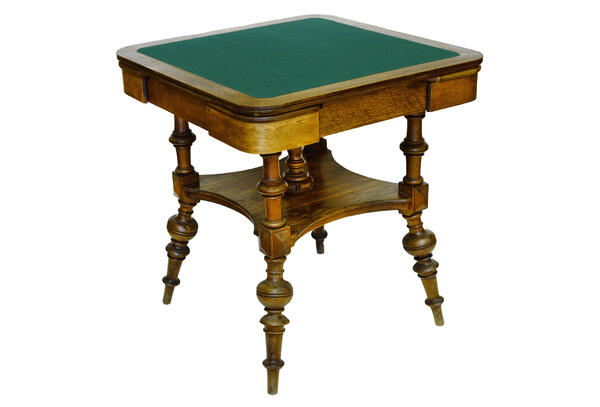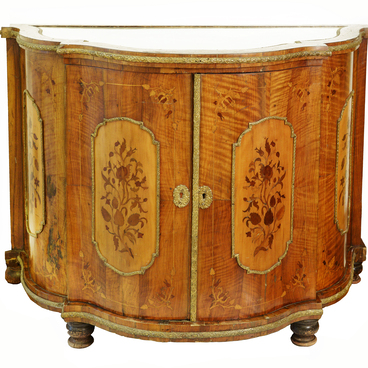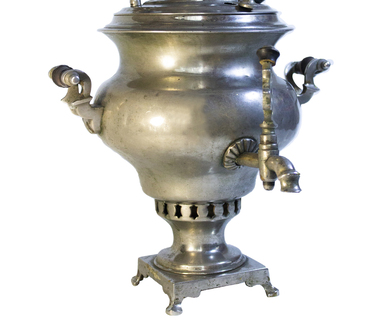The card table was upholstered with a cloth so that the cards would not slip. For this purpose, linen, drape, or velvet was used. This coating allowed players to make notes with chalk directly on the table, as they stayed longer on rough fabric than on polished wood. The marks were erased with special round brushes.
The card tables had a symmetrical square tabletop, and there were practically no shelves or crossbars. So, nothing interfered with the players and they were all on equal terms. As a rule, the tables were decorated with carvings or inlays.
Folding ombre tables appeared over time. During the day, these tables stood against the wall, statuettes or vases were placed on them. In the evening, when guests gathered at home, the tables were laid out in such a way that a cloth-covered surface was outside. In the 19th century, transformer tables were also invented where all four corners were folded according to the origami principle, and tables with tabletop rotating 90 degrees.
Card tables were used for almost all salon card games with no more than six players. In the 19th century, cards in Russia became so popular that even at postal stations they put card tables in guest rooms.
Card tables began to be used as a decorative element of the interior instead of its intended purpose. Tea and coffee were drunk at the table, magazines were laid out on them, and flowers were placed there.



